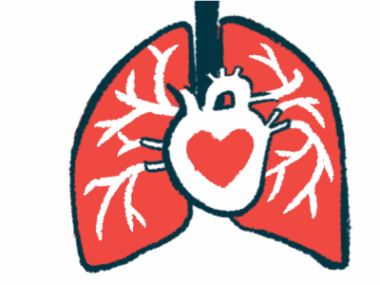LAS system may not reflect risks for lung transplant patients
Stratifying sarcoidosis by PH doesn't fully show how it confers higher mortality risk
Written by |

The Lung Allocation Score (LAS) system, which is used to prioritize patients awaiting lung transplant, may not accurately reflect disease severity risks for people with pulmonary sarcoidosis, a new study reports.
Results showed that several factors accounted for in the LAS remain significant predictors of mortality for patients on the transplant wait list. This “suggests that the LAS system could be further optimized to lessen the disparity in candidate waitlist mortality,” the researchers wrote in the study, “Lung Transplantation Waitlist Mortality Among Sarcoidosis Patients by Lung Allocation Score Grouping,” which was published in Transplantation Proceedings.
Most sarcoidosis patients have some lung involvement as part of their disease, which is then referred to as pulmonary sarcoidosis. In some cases, lung damage progresses to where a lung transplant is warranted.
The LAS was introduced in the U.S. in 2005 to prioritize lung transplant patients. Its aim is to give priority to “those with the highest clinical need for transplant based on the severity of lung disease in candidates likely to survive 1-year post-transplant,” the researchers wrote.
The score was designed based on clinical experience in relatively common advanced lung diseases like idiopathic pulmonary fibrosis (IPF) and chronic obstructive pulmonary disease (COPD).
Studies have shown that, after LAS was introduced, there was a sharp decline in patients with IPF and COPD who died waiting for a transplant. The effect of LAS on waitlist mortality in more rare lung diseases like pulmonary sarcoidosis is less well studied, however.
According to the current LAS system, people with pulmonary sarcoidosis awaiting lung transplant are divided into two groups based on whether they have pulmonary hypertension (high blood pressure in the lungs), a well-established risk factor for mortality in pulmonary sarcoidosis and other lung diseases.
Pulmonary sarcoidosis patients who don’t have pulmonary hypertension are classified under “group A,” with most COPD patients. Those with pulmonary hypertension are in “group D,” alongside most people with IPF. Patients in group D have more severe disease, in theory, so have higher transplant priority.
Comparing lung transplant outcomes after LAS
Researchers in the U.S. used data from a national registry to compare outcomes among 1,027 adults with pulmonary sarcoidosis listed for a lung transplant after LAS was implemented in 2005. Most (62.5%) had pulmonary hypertension and classified as group D, while 385 (38%) were in group A — no pulmonary hypertension.
Measures of lung function and exercise capacity were comparable between the groups. Patients in group A tended to have a higher body mass index (BMI, a ratio of weight to height) than group D. A significantly higher proportion of group D patients were Black (73% vs. 54%).
Group D tended to have higher oxygen requirements and were more likely to depend on total assistance than Group A. They also tended to have lower cardiac output, a measure of heart function. These differences are most likely a result of pulmonary hypertension, the researchers said, adding “more sarcoidosis group D candidates had double lung preference for transplant than sarcoidosis group A candidates (84% vs 69%).”
Results showed group D patients had a significantly shorter waitlist time — nearly eight months compared to about 10 months — but a higher mortality rate while on the transplant list (18% vs. 14%).
“Although the current LAS stratification of sarcoidosis patients by [pulmonary hypertension] does identify a higher risk group, the candidate waitlist mortality remains disproportionately elevated among sarcoidosis group D,” the researchers wrote.
Group D patients had a significantly increased risk of death during the first year on the waitlist in statistical models compared with group A. Group D showed a steeper decline in waitlist survival probability during the first six months, after which the probability drop was similar between groups.
A greater need for oxygen or assistance was associated with a significantly increased risk of death, by two- to threefold, further analyses showed, even though these factors are included in LAS stratification calculations. In turn, greater cardiac output was associated with a 41% significantly reduced transplant waitlist mortality.
Factors that have been previously linked to poorer waitlist outcomes in other lung diseases, such as height, blood type, and race, showed no significant association with waitlist mortality in these models.
“The present analysis shows that despite the inclusion of [pulmonary hypertension], oxygen requirement, and functional status in the LAS risk calculation, these clinical factors are important predictors of waitlist mortality among sarcoidosis patients,” the researchers wrote. “This raises the concern that the current stratification of sarcoidosis patients by [pulmonary hypertension] does not capture the full extent of increased mortality risk conferred by [pulmonary hypertension].”
The current LAS system stratification by [pulmonary hypertension] of sarcoidosis candidates will need to be modified to address group D’s excessive waitlist mortality, the researchers said.






